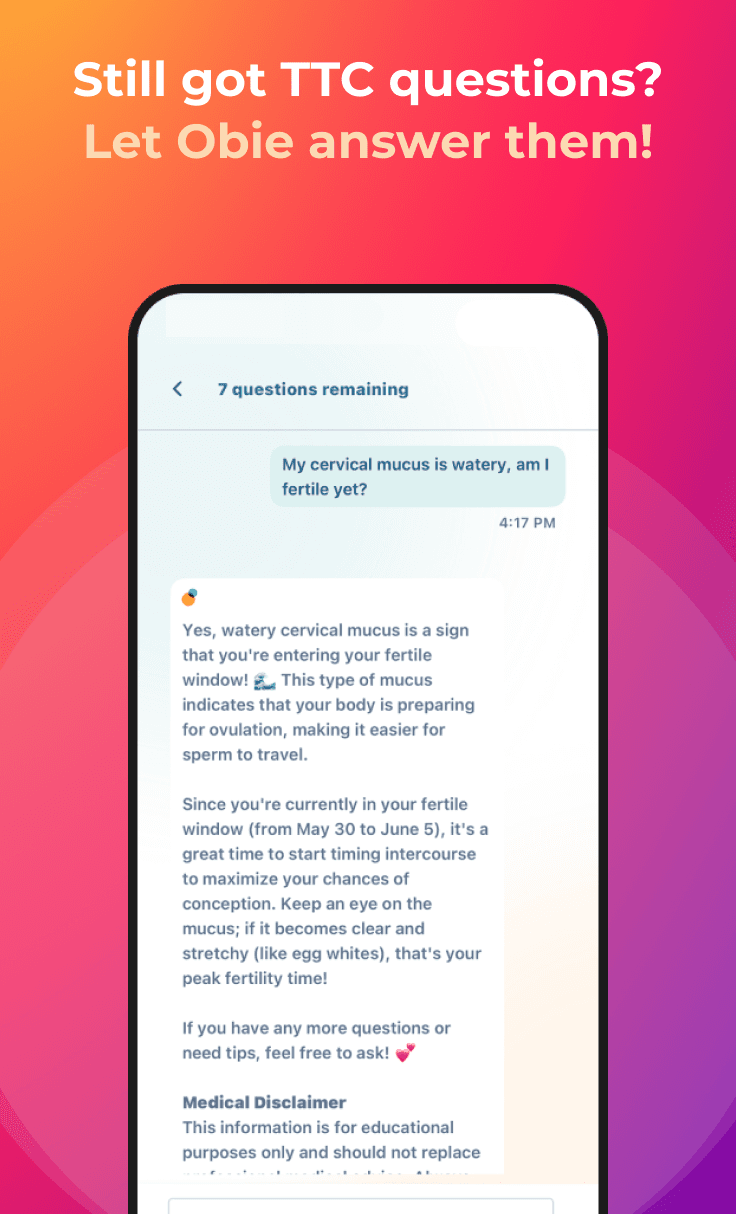Roadblocks to Getting Pregnant
babyMed University
Obie Editorial Team
.jpg&w=3840&q=75&dpl=dpl_9Xkbw7YLwiX3cG1HVSKWQWjqDeh6)
Identify existing issues
Whether you have tried for some time to get pregnant or if you are just starting out, learning more about your fertility (and your partner's) is vital. If you suspect that you and your partner may have a problem getting pregnant, finding and eliminating the cause will be your (and your doctor's) top concern.
Here is the breakdown:
30% sperm issues
25% fallopian tubes
25% ovulation
50% both ovulation and sperm issues
5-10% cervical issues
10-15% unexplained infertility
Many people are surprised by the "male factor" caused by sperm problems. In 50% of cases, both the man and woman have a fertility issue. That's why Dr. Amos highly recommends that you and your partner see a doctor as soon as you decide to start a family. A preconception visit with your Ob-Gyn may help you identify any issues you might have and that may help you get pregnant faster.
But even if you're already a few cycles into the baby-making mode, answering the following three questions as soon as possible will go a long way to establishing your chances of a successful conception.
- How are his sperm?
- Am I ovulating?
- Are my fallopian tubes open?
A sperm analysis can answer this question painlessly and without any needles or drugs. And remember guys, letting your partner subject herself to batteries of invasive tests and drug regimens without having yourself evaluated just isn't fair.
How can I check if I am fertile?
- Regular menstrual cycles: If you have a very regular menstrual cycle lasting between 21 and 35 days, then you can assume you ovulate regularly.
- Fertility charting: Fertility charting includes taking your basal body temperature and looking for other fertility signs such as changes in the cervical mucus. A biphasic basal body temperature chart reliably shows that you ovulated.
- Changes in cervical mucus will also help you figure out when you when and if you ovulate and when your fertile days are.
- Ovulation predictor kits (OPK): OPKs are pretty reliable methods of detecting ovulation. A positive OPK can predict ovulation most of the time.
- Ovulation calculator: the babyMed ovulation calculator will let you know when you will ovulate.
What are some tests my doctor may order?
- Sperm analysis: Doing a sperm count will help you determine if low sperm count is an issue.
- Blood progesterone levels: An elevated progesterone level about a week after presumed ovulation confirms ovulation.
- Pelvic ultrasound examinations: If they are done before and after ovulation, they can show the development of the follicle, and if it disappears, ovulation can be assumed.
- Endometrial biopsy: An endometrial biopsy about 10 days after ovulation can confirm that ovulation happened.
- Check the status of fallopian tubes: This is known as patency and it's is often done with a hysterosalpingogram (HISS-ter-o-sal-PEENG-go-gram; or even easier, just HSG). The HSG is an X-ray test in which dye is injected through the cervix and into the uterus and fallopian tubes while the doctor watches on a video screen. The uterine cavity fills with dye, and if the fallopian tubes are open the dye will fill the tubes and spill out into the abdominal cavity. The HSG is usually done in the first half of the menstrual cycle, between the end of the menstrual period and before ovulation. The HSG is useful to determine if the fallopian tubes are open and if the cavity of the uterus is normally shaped. There is a slight increase in fertility after this test, but it's important to keep in mind it is a diagnostic test, not a treatment.








